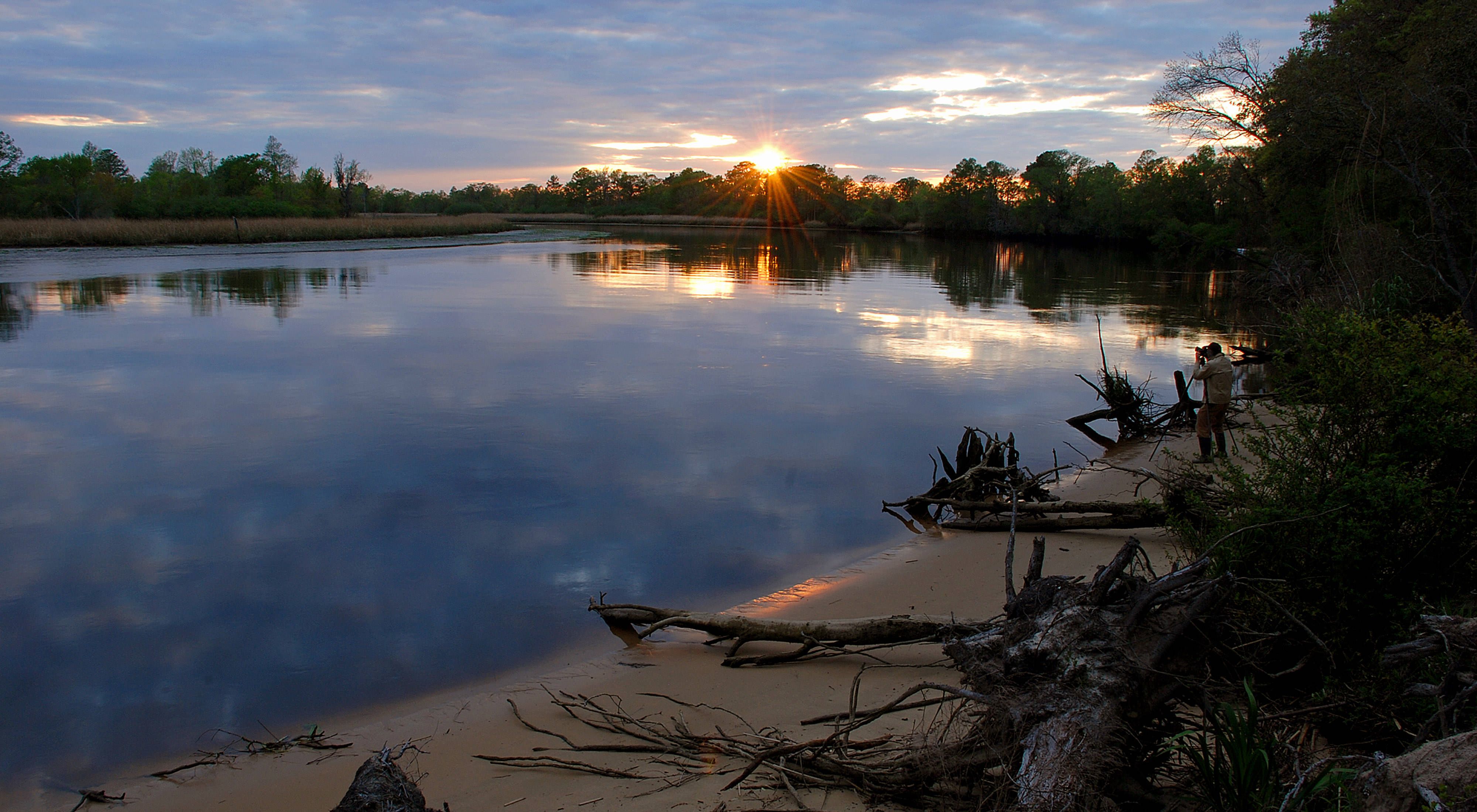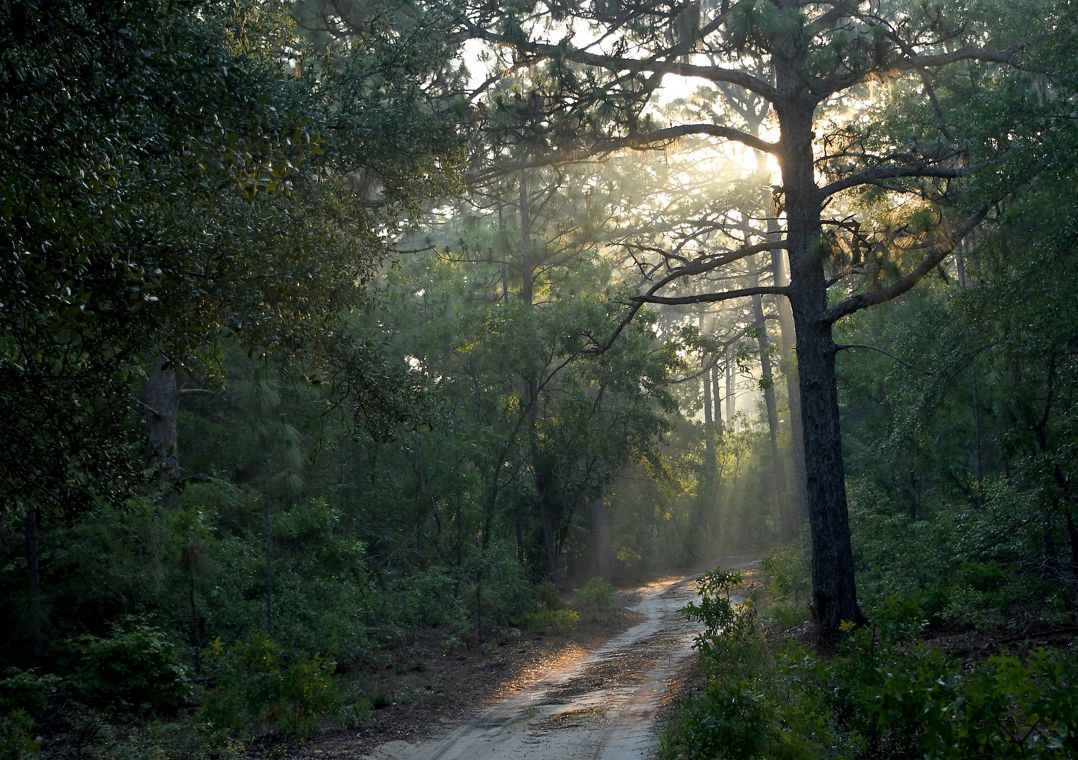The Story of Sandy Island
About the people who saved The Nature Conservancy’s largest preserve in South Carolina
Once the roar of the boat engine cuts out, it could be 2016 or 1916. Not much has changed on Sandy Island Preserve, the largest protected freshwater island on the east coast and, at 9,165 acres, The Nature Conservancy’s largest preserve in South Carolina. This is the story of the people who saved it.
Sandy Island Timeline
The state’s permit was contingent on a study of the bridge’s environmental impact on the island’s endangered red-cockaded woodpeckers. The delay opens a short window for advocates to find a way to protect the island.
1995
Public opinion turns against the bridge, thanks in part to coverage from The New York Times, The Los Angeles Times, The Washington Post and local news outlets.
An updated application still fails to address the bridge’s full impact on the woodpeckers. The permit is denied by the U.S. Fish and Wildlife Service and the state Office of Ocean and Coastal Resource Management.
1996, Success
After nearly three years of meetings between Milliken, Webel, Beach and then-Conservancy State Director Pat Morgan, Sandy Island Preserve is officially protected for $11 million:
-
$10M
The South Carolina Department of Transportation contributes $10 million, creating a mitigation “bank” to offset the environmental impact of future road construction.
-
$1M
The Nature Conservancy contributes $1 million, agreeing to steward the land and take full ownership once SC-DOT uses up its bank credits.
-
-$1M
Businessmen Roger Milliken and E. Craig Wall, Jr. agree to forego $1 million of the $12 million appraised value.
2000
The $3 million Winyah Bay Bioreserve Endowment is created with a spectacular $1.2 million closing gift from Diane Terni and The Diebold Foundation, in honor of Dorothy R. Diebold. The endowment funds a full-time land steward for Sandy Island and a project director for Winyah Bay.
2011
The South Carolina Department of Transportation officially transfers Sandy Island Preserve to The Nature Conservancy.
2014
On a sunny day in September, the Conservancy opens the Larry Paul Trail, a new, two-mile hiking trail funded by the Frances P. Bunnelle Foundation and named in honor of longtime Sandy Island supporter Larry Paul. Paul cuts the ribbon to welcome the trail’s first 40 hikers.

2015
The Nature Conservancy’s most recent red-cockaded woodpecker survey finds 45 active family groups on the island, a 20 percent increase over a baseline survey conducted in 1997.
The birds nest in the island’s native longleaf pines. The pine forests are kept healthy through frequent controlled burns that eliminate competitive trees and encourage new longleaf seedlings to germinate.
In 2016, thanks to the generous support of our members and volunteers, Sandy Island Preserve reaches a landmark 20th anniversary!

Beyond
The freshwater that made Sandy Island ideal for growing rice are becoming brackish as rising sea levels push saltwater upstream. While the island’s plants and wildlife will eventually change, its history and the legacy of those who saved it is here to stay.
Sign up for Nature Updates
Receive monthly nature news, conservation stories and updates near you. Get a preview of Nature News



